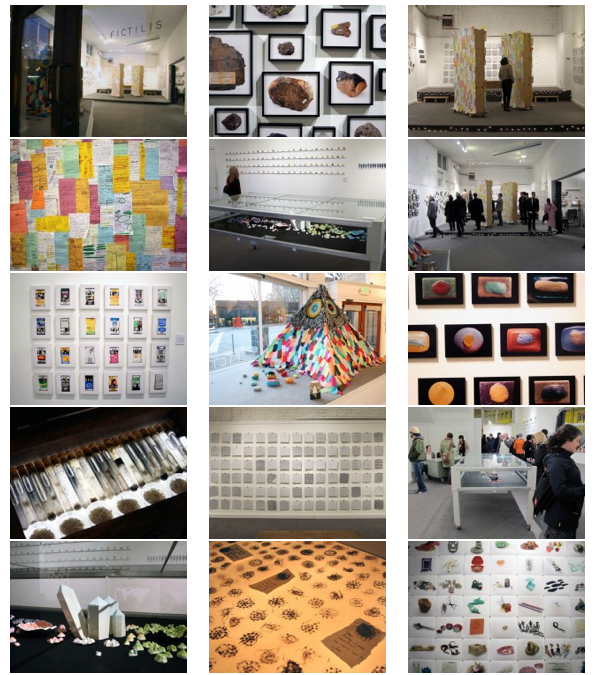On Saturday evening Zack from the Center performed in a hybrid lecture/cook off. This was the menu he helped prepare.
BLOG
DA4GA Update: Cook Book

Cat and I have spent the last week putting the finishing touches on the cookbook that we are publishing as part of our DA4GA project called “Eat Less, Live More and Pray for Beans.” The file is in the hands of the printer (Ditto Press in London). We were excited to take advantage of Ditto Press’ 2-color risograph printer. What follows is a sneak preview of a few sections of the publication. In all of the images below, the orange is actually a neon ink and will show up very differently on the book than on these design proofs.
Our thinking and writing during this project was highly influenced by the book Meals to Come by Warren Belasco. Here is one infographic from our cookbook that draws on his analysis of 200 years of Anglo-American food futurism.
Early on in our research we spent of time looking for interesting stories from the many data sets about global and Dutch food. Here are some infographics of trends and changes that caught our eye.
 (click for a larger version or download the .pdf)
(click for a larger version or download the .pdf)
On the right-hand side is a short essay from the book called “Calling All Beta-Tasters and Gastronauts: This is Your Opportunity to Dive Into the Future Mouth-First.” To develop the recipes we worked with repeat collaborates Heather K. Julius and Scott Heimendinger. Both culinary creatives responded with some amazing recipes which we reveal on June 7th.
When we spoke to Tiny van Boekel at Wageningen University we were quite amazed to hear about “MeatLess” a lupine-flour based product that can be used to make meat that is 80% meat and 20% non-meat. This conversation inspired our “Meat Map” so we could figure out where to put semi-meats on the spectrum.
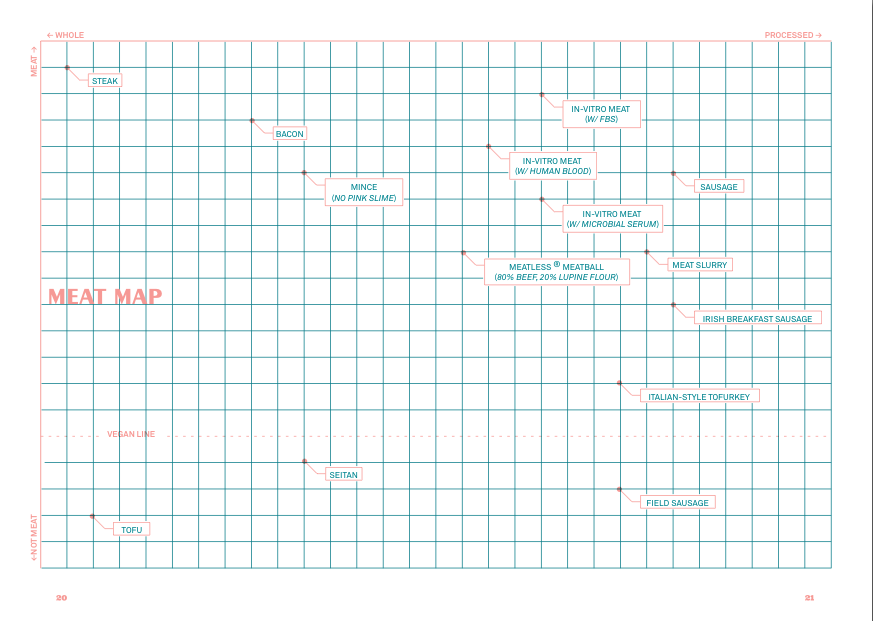 ((click for a larger version or download the .pdf)
((click for a larger version or download the .pdf)
And finally, in the process of writing this cook book, we came to realize that we are always on the look out for unexpected ingredients. Now we have one more to add to the list: Maisantozwammen a mushroom grown on transgenic corn.
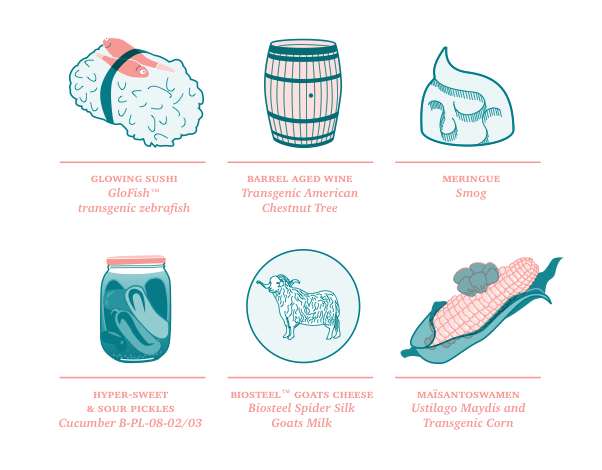
We hope you are able to visit the exhibit at Naturalis in the latter half of 2012. If you want a copy of the cookbook you can visit the Naturalis museum in Leiden, the Netherlands, where it will be on sale in the bookstore starting June 7th. It will also be available on their online bookstore (http://www.natuurenboek.nl/) starting June 7th. (They ship internationally.) Or you can email us directly at info at genomicgastronomy dot com
Seed Savers As Planetary Sculptors
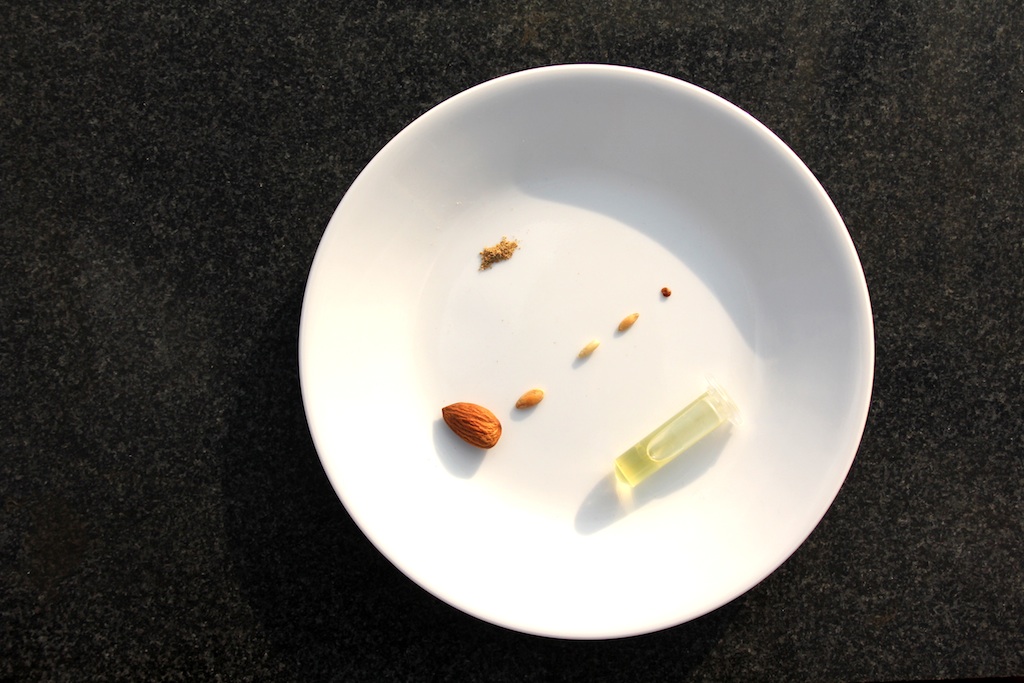
Reviewing the final copy for our new cookbook (being released as part of DA4GA on June 7th) I ran across this little menu note made in our Planetary Sculpture Supper Club Bangalore menu, when we first prepared our “Seed Savers Delight” dish:
It has been said that technology is the most human thing about us. Seed saving is a one of the oldest and most resilient human technologies. Seed saving is an environmental interface between humans and the plant world we are constantly co-evoloving with.
One of the greatest databases ever created is the collection of massively diverse food genomes that have domesticated us around the world. This collection represents generation after generation of open source biohacking by hobbyists, farmers and more recently proprietary biohacking by agronomists and biologists.
This dish is a celebration of the great work by countless experimenters and aesthetes whose contribution to our sculpted planet and agri-eco-culinary system is rarely acknowledged. It should remind us that “We Have Always Been Biohackers”
I am still pretty happy with that description.
Review of EDIBLE in Nature
There is a review of EDIBLE in nature here: http://www.nature.com/nature/journal/v483/n7390/full/483404a.html
Here is a .pdf
Doomer Food Seattle
The Center showed a version of DOOMER FOOD as part of the “Collections” show at Fictilis Gallery in Seattle, WA, USA. The show is up until March 29th.
Seaweed Wall
SEAWEED WALL by The Center for Genomic Gastronomy, an exhibit at the EDIBLE exhibition at SCIENCE GALLERY, Trinity College Dublin, Ireland in 2012
Feeding Times at Edible
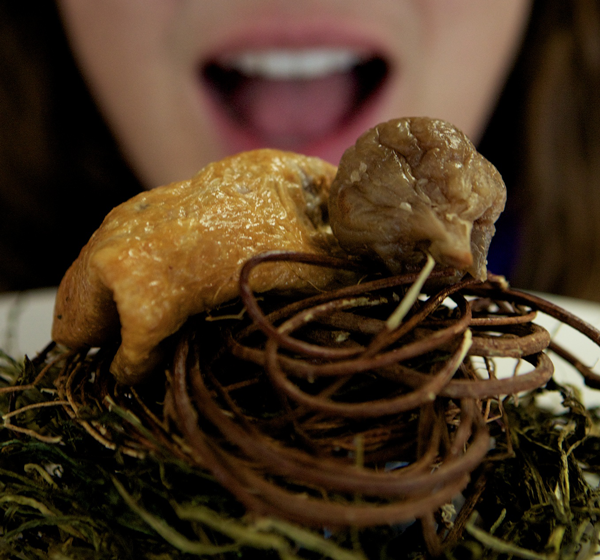 Feeding Times Special: Vegan Ortolan
Feeding Times Special: Vegan Ortolan
The Center for Genomic Gastronomy curated the current exhibition at the Science Gallery, EDIBLE. We were really excited about getting visitors to experience parts of the exhibition through taste – one of the senses that is often disregarded in exhibitions.
To bring this component to life we commissioned culinary extraordinaire Heather K. Julius (who also runs the Special Snowflake Studio) to develop recipes, challenging her to create dishes such as the Vegan Ortolan. It was an inspiring collaboration and you can find all of Heather’s recipes for edible, as well as recipes from other foodies, chefs and scientists on the Science Gallery website.
The feeding times will run twice daily for the duration of the exhibition, serving a new recipe every three days. Today was the first day for Vegan Ortolan.
ABOUT VEGAN ORTOLAN
The traditional preparation of the ortolan bird in France demands that they are captured alive, force-fed, drowned in Armagnac and eaten whole. Although it is illegal to prepare and eat, the dish retains a forbidden attraction for some adventurous eaters. What better way to challenge the skills of a chef than to create a vegan recipe which simulates the experience of crunching through the skin, guts and bones of a small bird, without using any animal products? This dish is intended to be consumed in the traditional way with a large napkin covering the head and the face to keep the flavours in, and to hide one’s shame from God.
Tasting notes for traditionally prepared ortolan emphasize the rich foie gras like taste of the flesh, the crunch of the many tiny bones and the bitterness of the guts.
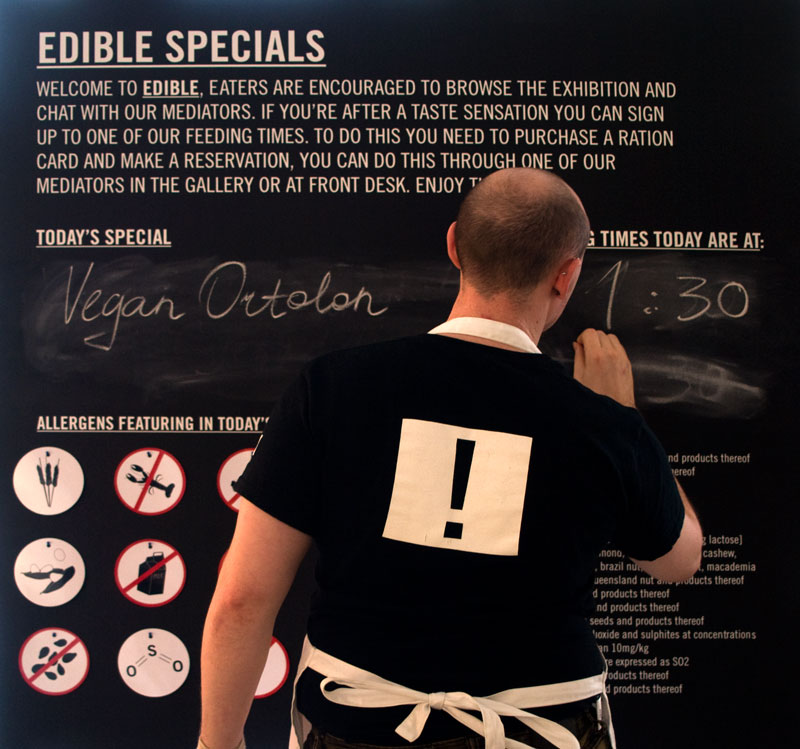
The feeding time specials change every three days for the duration of the exhibition. Here is Conor updating the times for today.
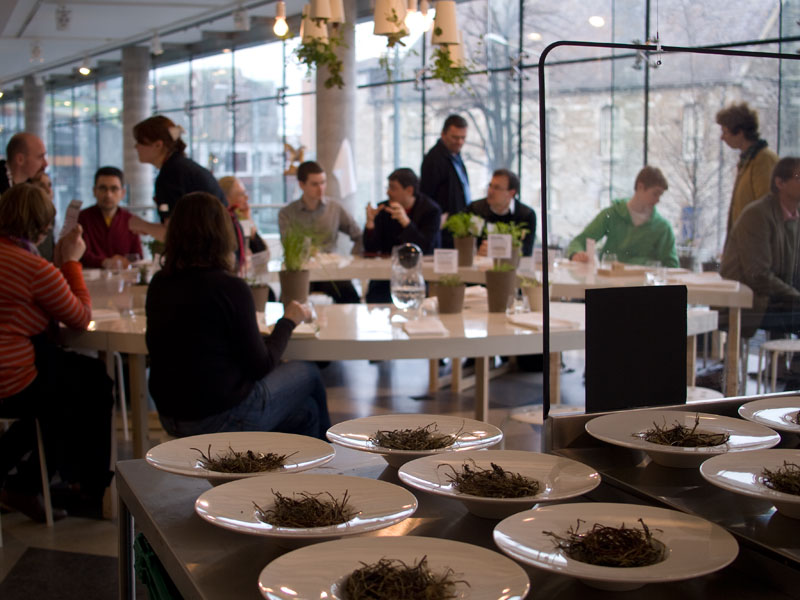
The nests are ready and the Eaters are taking their seats.
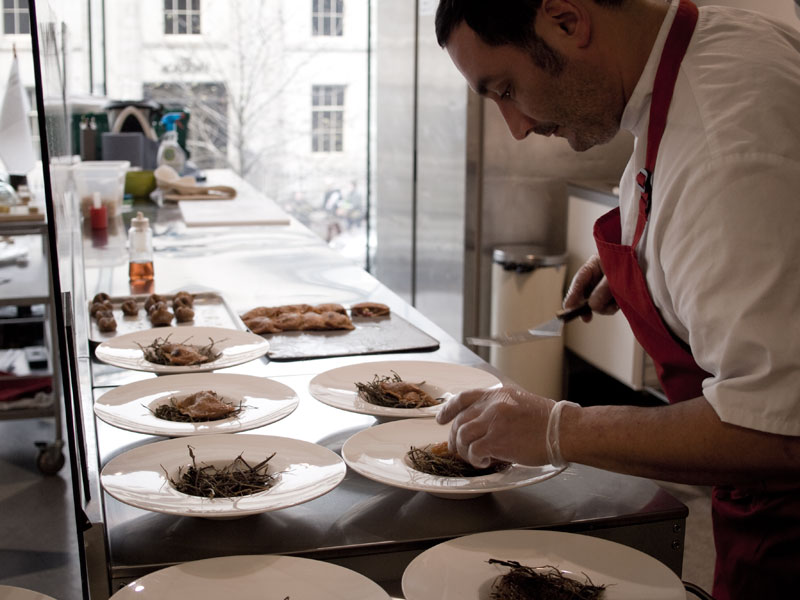
Enguerran, head chef for the exhibition is plating the vegan ortolan.
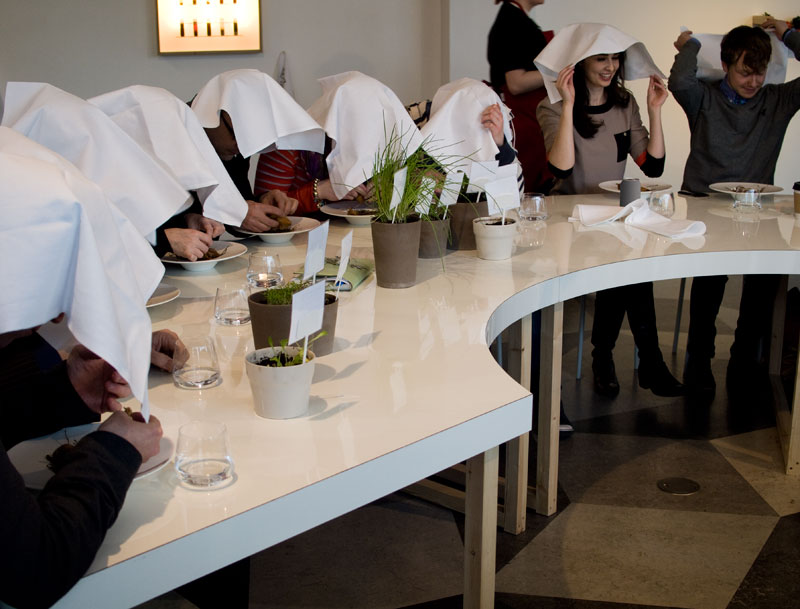
The dish is traditionally eaten with a cloth over your head – to keep the aromas in and to hide your shame from God.
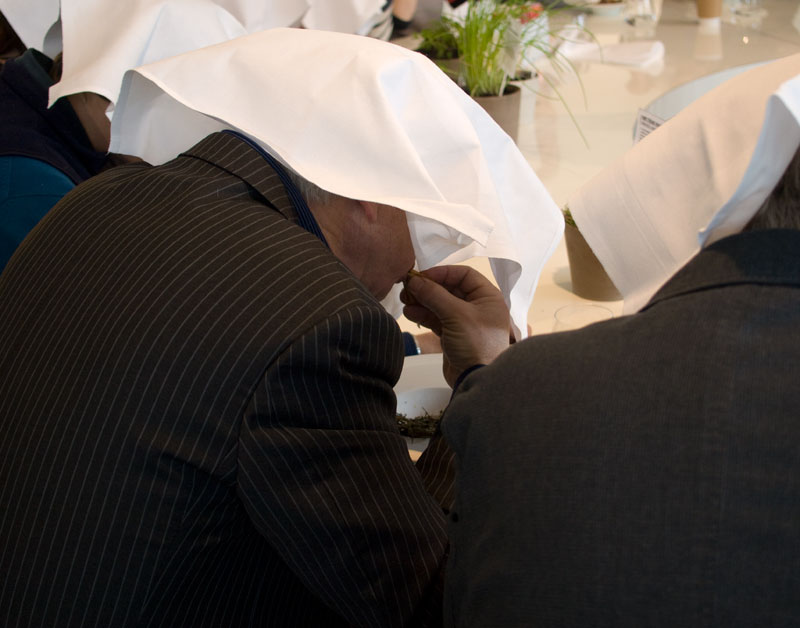
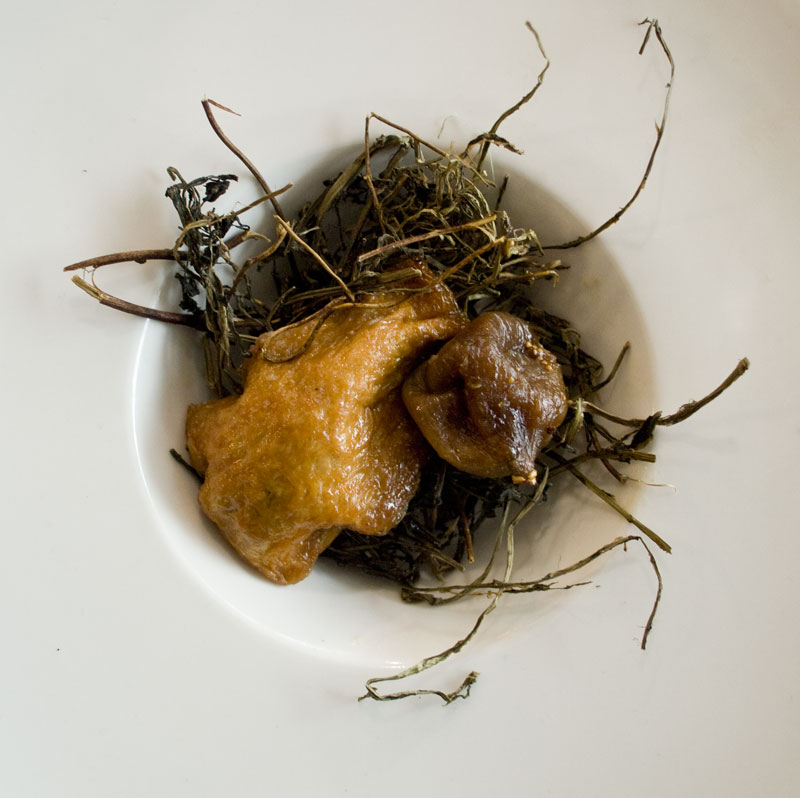
The Fig symbolises the head and beak, while the body is represented by a tofu pocket.
CURRENT & UPCOMING
April 9th - 10th 2024
Future Foodscapes. Ground Truth.University of Barcelona / S+T+ARTS MU SAE. Barcelona, ES.January 28th - May 29th 2023
Live and Let Live. To Flavour Our Tears. Museum Jan Cunen. Oss, NL.February 15h - April 30th 2023
More Meat Less Meat. New National Dish: Norway. Trondheim Kunstmuseum Gråmølna. Trondheim, NO.February 15h - April 30th 2023
More Meat Less Meat.Meatball Multiverse. Trondheim Kunstmuseum Gråmølna. Trondheim, NO.October, 2021 - June, 2022
Drought in Waterland, S+T+ARTS4Water, Veluwe region, NLSeptember 23rd - October 02nd 2022
WaterWORKS. Food Forest Fantasies. V2_ Lab for the Unstable Media, Rotterdam, NLNovember 19, 2021 - October 01, 2022
Planetary Indigestion, University of California Santa Cruz, USApril 27th - October 07th 2022
Balcony for the brave. De-Extinction Dinner. Hyundai Blue Prize Art+Tech 2022, Beijing, CN.April 21st - August 29th 2022
Does the Blue Sky Lie? Guided Smog Meditation. New Delhi, IN. KHOJ.October 08th - 10th 2021
Przemiany Exhibition. New National Dish: Poland, Copernicus Science Centre. Warsaw, PLNovember 18, 2021 - December 12, 2021
Grafill, risography exhibition, Oslo, NOOctober 16, 2021
SmakÅs, food and technology festival, Ås, NOSeptember 16, 2021 - December 31, 2021
Food Phreaks! Biodiversity of the Kitchen, Center for Genomic Gastronomy Solo Show, Norwegian Center for BioArt (NOBA), Vitenparken at Ås, NorwayOctober 13-15, 2021
ARTECH Contingency Exhibition, Aveiro, PTJune 12, 2021 - August 29, 2021
'Breathe Deep', exhibition at Tomorrow Maybe gallery, HKApril 24, 2021
OFF-biennale, Smog Tasting, Budapest, HUJanuary 11, 2021 - January 11, 2023
‘Cultures of Biotech’ Art’s Work in the Age of Biotech, online Exhibition at University of Pittsburgh, USDecember 11, 2020 - May 06 2021
'Welcome to the O.F.F.I.C.E', BAD Award expo Evolutionaries, MU Eindhoven, NetherlandsSeptember 02, 2019 - May 08, 2020
SEED-O-MATIC, Colby College Museum of Art. Maine, US.March 06 -07, 2020
Digital Wild (Conference), Trondheim Electronic Arts Centre. Trondheim, NO.January 24 - 25, 2020
QuozArt Festival 2020, Alserkal. Dubai, UAE.January 20, 2020
Bergen Center for Electronic Arts. Food Phreaks: Taste, technology, and open culture. Bergen, NO.November 08 - 10 2019
Microwave International New Media Arts Festival 2019: E.A.T. Smog Tasting Take out, To Flavour Our Tears. Hong Kong, CN.October 24 - November 21, 2019
ClimATE, Aalto University, Espoo, FI.October 11, 2019
Edible Futures - Friday Forum. V&A Museum. London, UK.August 23 - September 11, 2019
Da Vinci Creative Festival 2019: Living life. KoreaJune 07 - 10, 2019
The Agri-Cultures.Seed-Links Exhibition. Svalbard, NO.17 May - 29 September,2019
Creatures made to Measure. Design Museum. Ghent, BE.May 30 - June 05, 2019
Women in Art, Science and technology, FEMeeting, 2019. Lisbon, Porto, PT.February 28, 2019 - March 2, 2019
Sustainable Foods, Kavli Frontiers of Science Symposium, 2019. Irvine, California, US.February 14 - March 02, 2019
Interactivos 2019: Eating Against Collapse, Medialab-Prado, Madrid, ES.November 30, 2018 – March 10, 2019
TFOT: AnthroAquaponics System, Reshape, MU Artspace, Eindhoven, NLDecember 02, 2018 – April 28, 2019
Food Revolution 5.0, GEWERBE MUSEUM - A collaboration with Museum of Arts and Crafts (MKG).Hamburg, DE.October 03 -06, 2019
New National Dish, Przemiany Festival, Copernicus Science Centre. Warsaw, Poland.September 16, 2018-January 6, 2019
De-Extinction Deli, Creatures Made to Measure – Animals and Contemporary Design, Museum Marta Herford, GermanyAugust 24, 2018
To Flavour Our Tears Talk, RISD, Biodesign SymposiumAugust 24-September 27, 2018
To Flavour Our Tears, RISD Nature Lab, Biodesign ExhibitionApril 11 - Oct 08, 2018
New National Dish, MAAT Museum’s exhibition ECO-VISIONARIESJune 22, 2018
Endophyte Supper Club, Dublin, IrelandJune 19, 2018
Talk, Endophyte Club, The Irish Architecture FoundationMay 12 - NOV 04, 2018
Food Future Canapés, The Future Starts Here, Victoria and Albert Museum, London,UK.May 25 - 27 2018
Talk, Design Matters, Reconnecting Taste & Place, Hangzhou, ChinaApril 13, 2018
De-Extinction Dinner, Science Gallery DublinMarch 1, 2018
Climate Fiction PTDec 21, 2017
Serendipity festival, Goa IndiaOctober 21 - 29, 2017
Dutch Design Week: Embassy of FoodOctober 19 - 21, 2017
Experiencing Food (Lisbon)October 2nd, 2017
Variety Showcase, Culinary Breeding NetworkAug. 9-10, 2017
Hackers & Designers Summer AcademyJune 23-24, 2017
Zine Hotspot — Cork Printmakers @ WaterstonesMay 2017
NEPTUN ART/ SCIENCE LABNov. 8, 2016
New National Dish, Jeu de PaumeNov. 5 - Apr. 2, 2016
2116: Forecast of the Next CenturyNov. 5th, 2016
KiKK Festival WorkshopOCT. 14-16, 2016
Pixelache Festival visiting JYVÄSKYLÄOct. 12, 2016
Couterfactual Cuisine at IFTFSept 22-25, 2017
Pixelache Festival, Interfaces for EmpathySept 15, 2016
Food in Space, ESA, London Science MuseumJune - September 2016
Medialab Prado: Interactivos 10-Year CelebrationSpring 2015 - Summer 2016
Leverhulme Trust, Artist in Residence, the Rowett Institute, ScotlandMay 27-29, 2016
May Festival, Aberdeen. Food ForecastMarch - July 2016
2116 @ Glucksman Gallery, Cork, Ireland10 March - 05 June 2016
FIELD TEST Exhibition, Science Gallery, Dublin18 March 2016
Soylent Banquet, Internet Stadl, Dusseldorf9—21, FEB 2016
SMOG TASTING: SMOG SYNTHESIZER5-6 Febrary
De-Extinction Deli, AND Fair, Rijeka Croatia29 January 2016
De-Extinction Deli, V&A LondonRECENT POSTS
- WHY AREN’T YOU BIO-MAXXING?
- FFTT: April 1 Flevoland Site Visit
- DATABASES OF PLACE & TASTE: Significant species, cultivated plants & observed organisms.
- Terroir That Travels in Lautrec, France
- Terroir That Travels: Making Maps
- GGGarden Update — Autumn 2024 Edition
- Food Forest Taste Test: First Test Kitchen
- FOOD FOREST TASTE TEST: Voedselbos Thuishaven
- Mock Wild Picnic #01
- AI Test Kitchen
Archives by Month:
- June 2025
- March 2025
- January 2025
- October 2024
- July 2024
- May 2024
- March 2024
- February 2024
- January 2024
- November 2023
- November 2022
- December 2021
- November 2021
- April 2021
- February 2021
- January 2021
- November 2020
- October 2020
- September 2020
- August 2020
- June 2020
- March 2020
- January 2020
- November 2019
- January 2019
- July 2018
- November 2017
- August 2017
- July 2017
- June 2017
- May 2017
- February 2017
- January 2017
- November 2016
- July 2016
- May 2016
- April 2016
- March 2016
- September 2015
- June 2015
- April 2015
- February 2015
- January 2015
- December 2014
- November 2014
- October 2014
- September 2014
- May 2014
- April 2014
- February 2014
- January 2014
- November 2013
- September 2013
- August 2013
- July 2013
- June 2013
- May 2013
- December 2012
- November 2012
- October 2012
- September 2012
- August 2012
- July 2012
- June 2012
- May 2012
- March 2012
- February 2012
- January 2012
- October 2011
- July 2011
- June 2011
- May 2011
- April 2011
- March 2011
- February 2011
- January 2011
- November 2010
- October 2010
- September 2010
- August 2010
- July 2010
- June 2010
- May 2010
- March 2010





